K900 Gives Kia a Luxury ‘Multi-Vitamin’
Filed under: Equinox, Autos
By John Gilbert
To the uninformed, K900 might sound like the latest super-vitamin, capable of doing mighty things for your well-being and overall health. In a way, it is that for Kia, because the K900 is Kia’s all-out luxury sedan, powering Kia to rise to a new dimension in automotives.
Skeptics might say that Kia has become known for building strong and inexpensive economy cars, so what are they thinking building a large sedan to compete in the all-out luxury car segment? “We didn’t build the K900 just to serve the market,” said Orth Hedrick, Kia’s vice president of product planning. “This car is designed to change the perception of Kia.
“We had four points we focused on — design, luxury, performance, and technology. In design, we think we hve a modern, timeless look that has a presence.
“For luxury, we have an elegant version of the signature grille and 16-element LED headlights on the outside, and a new definition of what a luxury interior has to be, with modern, sophisticated materials and every touch point making you think luxury and sophistication. It took us three or four years to find a source for the Nappa leather hides from South America that were exactly what we wanted, and the natural wood accents complement it.
“Performance comes from the platform with a stance that can only be gotten by rear-wheel drive,” Hedrick added. “We’ve got 52 percent of the weight on the front and 48 percent on the rear, with a solid structure.”
Of course, the 5.0 V8 is a key element of the performance, with 429 horsepower and 376 foot-pounds of torque, running through an 8-speed automatic that Kia has tweaked for quicker shifting, up and down.
Technology is evident throughout the exterior styling and mechanical features, but blends with luxury that surrounds occupants on the inside. Seats are encompassing in their support and comfort. The multimedia driver assist has a 9.2-inch screen in the center stack, with adjustable redundant readouts on a heads-up display. The optional Harmon Kardon Lexicon audio system has a 12-channel digital amplifier and 17 speakers. Adaptive lane-finding is a feature on the headlights, which have a unique arrangement with two 4-LED clusters on each side, making 16 separate beams. Read more
New Engines Give Volvo More From Less
Filed under: Equinox, Autos
By John Gilbert
LAS VEGAS, NEV. — Volvo has always built solid and substantial vehicles, with equal parts inherent safety and the durability to last indefinitely. While mastering those impressive objectives, Volvo engineers also are programing their cars for the future, with a new family of 4-cylinder engines that can be tuned and tweaked to span all the demands of power and efficiency for the company’s latest sedans, wagons and SUVs.
Volvo’s recent models have used 4-cylinder, 5-cylinder, 6-cylinder and even V8 engines to handle the varying needs of different Volvo vehicles. While Volvo’s assorted engines have all won acclaim, the magic of computerized supercharging and turbocharging can push its new high-tech 4s to cover all horsepower and torque requirements.
The new modular Volvo-built 2.0-liter 4 is designed to be built alongside the current tried and true 2.5-liter 5-cylinder and the 6, engines that will be phased out as the new 4s are phased in. The existing 5-cylinder has 226 horsepower and 275 foot-pounds of torque; the existing 6 has 276 horsepower and 325 foot-pounds — good figures indeed.
However, the new “T5” is turbocharged, and the new “T6” is both supercharged for low-RPM duty and turbocharged for the high end. Using both techniques gives the new 4 stunning power — 302 horsepower and 295 foot-pounds of torque. For good measure, both new engines are rated at over 30 miles per gallon in highway driving, and have a combined city-highway estimate of either 28 or 29 mpg.
“We were very proud when our 6-cylinder turbo made the ‘Ward’s 10-Best Engines’ list, but our new 4-cylinders will outperform them and will crowd them out.” said Jan-Erik Larsson, Volvo’s chief powertrain engineer. ”We are develping other engines as well. In Europe, we have a turbo-diesel, and a plug-in hybrid. We have put a lot of resources into producing the attributes customers want.
“Nobody can predict what future cars will be using. Long-term, we think we’ll be using electric power, but as we get there, will we be using gasoline engines, diesels, hybrids, or pure electric power? No question, our industry is in a state of transition right now. Whatever we will be using by 2050, we know that internal combustion engines will still be in use in some form in the near future, say, 2020.”
As an automobile company always exuding stability, Volvo has spent a lot of its history in transition. In recent years, that transition has been toward high style, and Volvo could well place the new cars on a pedestal and promote their styling alone. Instead, it’s time for Volvo engineers to show off their newest engines, which were introduced to the media in the latest S60 sedan, V60 wagon, and XC-60 compact SUV through the countryside surrounding Las Vegas. It took most of us in the automotive media a while to figure out the new designations, because while they describe different engineering tricks on the same basic engine, they are, at best, confusing. Read more
Big 3 Again Big at Detroit Auto Show
Filed under: Equinox, Features, Autos
By John Gilbert
DETROIT, Mich. — Chevrolet became king of the “good ol’ boys” at the North American International Auto Show in Detroit by kicking off media preview days with the celebration of its biggest day ever.
Chevrolet swept both the 2014 North American Car of the Year with the restyled Corvette and North American Truck/Utility of the Year with the revitalized Silverado. While electric cars, hybrids, and ultra-high-gas-mileage technology filled Cobo Hall with a sea of advanced engine technology, the awards were swept by two Chevy stalwarts — with nary an overhead camshaft found amid any engines available in either of the two vehicles — as the Corvette and Silverado won the hearts of tradition-bound selectors.
The car and truck announcements, voted on by 49 independent media types, kicked off the early morning start to two days of media presentations for a reported 5,169 automotive writers, broadcasters and bloggers who converged on Motor City. Their presentation was immediately followed by a parade of what was reported as 50 vehicle unveilings, many of them worldwide introductions.
The resurgent “domestic” manufacturers of the traditional Detroit Big Three made strong showings, and even though the global marketplace blurs the lines, with numerous import brands made in the U.S., and more U.S. brands making their vehicles outside U.S. borders, the delineation continues, which at least allows for more convenient categorization: Read more
CLA250 Tops Price, Style Standards
Filed under: Weekly test drives, Autos
By John Gilbert
Amid the exhaustive competition for assorted 2014 Car of the Year awards, the Mercedes-Benz CLA250 will NOT win any of them. An objective and discerning person with the chance to test-drive one might be left with one obvious question: “Why not?”
From the standpoint of style, technology, driving pleasure, agility, comfort, and the astounding tandem of low sticker price and off-the-scale real-world fuel economy — a pair of attributes not usually mentioned with any Mercedes model — the CLA establishes some true benchmarks.
If someone suggested you could buy the best-looking sedan Mercedes ever produced, built on the first winter-beating front-wheel-drive sedan platform and capable of well over 30 miles per gallon for $50,000, you might be impressed. When you’re told it can be had for just a smidgeon over $30,000, you might knock over the salesman’s desk in your zeal to sign on the dotted line before such an obvious mistake could be corrected.
But it’s true. The Mercedes CLA250 starts at $30,000, and climbs only gradually with enticing stand-alone options instead of the usual costly package-price deals. True, you can get an AMG super-hot version for $50,000, and it is truly a world-class screamer. But why bother? Read more
Sports Home for Generation, Metrodome is No. 1
Filed under: Sports
By John Gilbert
As 2013 fades gently…make that frigidly into 2014, we are almost smothered by the sheer weight of stories and videos of media types telling us what the most important stories were during the past 12 months. It’s the same in sports, where everybody has an opinion of what the top sports stories of the year were.
This particular year, we had two of those conglomerate stories intertwine. Along with the biggest sports stories of 2013, there were all sorts of reminiscences by different sports columnists about the biggest games and events in the Metrodome’s 32-year history.
The Metrodome, located in downtown Minneapolis, ended its life when the Vikings finished their mostly miserable 2013 season with a surprising 14-13 victory over Detroit’s self-destructing Lions in a very entertaining December 29 game. It was entertaining, if meaningless, because the Lions had the division secured with seven games remaining, but lost six of those seven to pull despair out of the jaws of playoff success. And, of course, the Vikings had been out of contention since about Week 4 of a season that shall remain known for its quarterback roulette.
It is interesting, and a little amusing, to read all the insulting, denigrating comments about what a dump the Metrodome has been — mostly written by well-meaning folks who spent their years in the press box, whether at Met Stadium or the Metrodome, and had every possible creature comfort at their disposal. They have long ago lost the perspective of appreciative fans, who literally came in out of the cold when the Vikings, Twins, Gopher football and assorted state high school soccer and football teams, and assorted small college baseball teams found relief from the harsh weather to play indoors.
I had the chance to cover a number of major events in the Dome, including the deciding game the Twins Game 7 World Series triumph over St. Louis. I was there for quite a few other Twins games through the years, including the 1984 game when Dave Kingman, a huge left-handed slugger, hit a skyrocketing pop fly that went up and up and up toward the teflon ceiling — and then simply didn’t come down. The ball had, incredibly enough, gone into one of the small vent holes in one of the roof panels and disappeared. Kingman was awarded a double on the play, which is a pretty good reward for hitting a pop up, no matter how high.
I was also at the Dome when the command was given to take a knee to let the final seconds to run out the clock in the 1998 NFC championship game when the Vikings decided they were better off taking the Atlanta Falcons into overtime than in taking a shot at winning the game at the end of regulation. Atlanta promptly kicked the overtime field goal for for the conference title.
There were some problems with the Metrodome. The first one was tactical. When they decided to go with the inflatable teflon roof, it actually worked out amazingly well, even though it deflated from too much snow a time or two. But the decision to make the roof an off-white color was ridiculous, because what else in the sports world is an off-white color? If you guessed a baseball, you’d be right on. So every fly ball became an adventure for every outfielder, because as soon as the ball got higher than the seats, it became a vision test for every fielder.
It also meant that every pop fly seemed to disappear like Dave Kingman’s unique hit.
A fool might have decided to paint the ceiling a neat sky blue, as in the sky, rather than the exact color of a baseball. The other biggest problem was the first few years without air-conditioning, when the air inside during summertime seemed as artificial as the turf.
I also had the chance to play a couple of tournament games on that turf, one a “media” softball game, and the other an actual Over-35 baseball tournament, when I was recruited to play for a San Diego team. I made one great play from shortstop, when I darted to my left for a hard ground ball, with no real chance of reaching it, only to luck out when the topspin acquired on its first hop made it come up high on its second bounce — right into my glove. Those were memorable experiences, although they meant nothing in the overall picture of the place.
The Minneapolis Star Tribune did an impressive section pointing out all the biggest sports events held at the Dome through its lifespan. The reminiscing included numerous Twins happenings and Vikings events, and the Super Bowl and the two World Series, as well as state tournament games, basketball games, soccer games, and monster truck shows. When monster trucks were mentioned, I scoured the story for something, anything, on the series of Stadium SuperCross motorcycle races that ran there. I found nothing.
Working two blocks wesst of the Dome, I fought to cover the SuperCross. I had been covering motorsports along with hockey for most of three decades, and quite late in that time, I found that motocross racing, outdoors over bounding hills and jumps and obstacles, was very exciting, both for amateur and pro racers. During a couple of winters, I spotted some Stadium Supercross races on television. These were amazing events, with twisting, turning, hilly courses sculpted into off-road race courses through piles of dirt that had been trucked in.
In April of 1994, the Metrodome was selected as a site for one of the official season of Stadium Supercrosses. A young man named Jeremy McGrath had become a cult hero on television, so I suggested that this race would be worth covering on a Saturday night at the Metrodome. The suggestion was rejected. At that time, there was probably nobody else on our staff who had ever attended a motorsports event other than me. I reasoned that because of the television coverage, the event could draw a great crowd, maybe even 10,000 or 20,000 fans. The sports editor laughed out loud. Outrageous, he said.
So I went on my own, without any possibility of writing a story on it, and I was astounded to find the Metrodome was full — 47,000 fans — who hadn’t noticed the complete lack of publicity as they hustled to buy tickets and fill the place. The following Monday I mentioned that the crowd was, indeed, pretty good, and when I informed the sports editor what it was, he was properly impressed. It was the best crowd of that particular calendar year for any sports event in the state of Minnesota!
The next year, they let me cover it, and I shot a few photos of Jeremy McGrath flying over two or three jumps at a time, soaring above hard-working riders below, and doing gymnastic tricks on his motorcycle all the way. That’s become quite standard among some other top riders over the years, but back then, 20 years ago, McGrath was in a class of one who did such tricks and gave each one a nickname.
I wrote about the Supercross for the next few years, as it continued to sell out with advance tickets annually. In years when the Twins were mediocre and the Vikings were as well, the Supercross might have again been the largest crowd in the Dome for entire calendar years. My point is that it deserves a place on any list of the major events held in the Metrodome, but it’s difficult, if not impossible, to reminisce or recall any event, if you didn’t attend it.
Amid all the colorful recollections of all the games and concerts and extravaganzas held in the Metrodome, there is a star-crossed connection with the never-ending lists of the biggest sports stories of 2013 and the end of the Metrodome’s history, coinciding with the last Vikings game. In my mind, after housing so many memorable events, over so many years of being our state’s home sports facility, the biggest single sports story in Minnesota in 2013 is…the closing of the Metrodome.


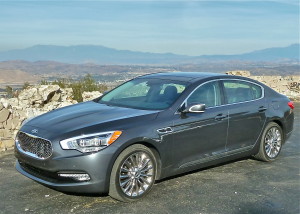
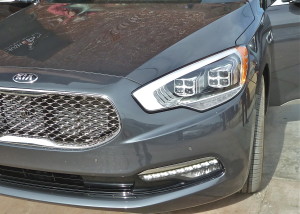
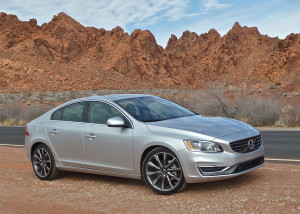
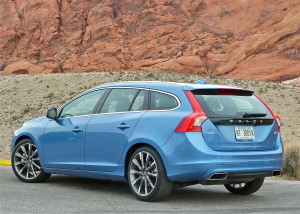
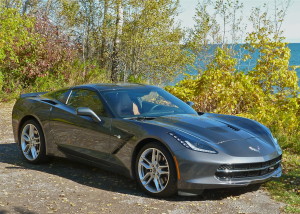
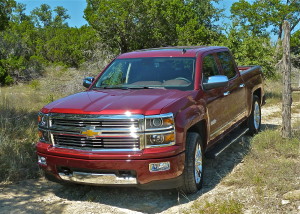

 John Gilbert is a lifetime Minnesotan and career journalist, specializing in cars and sports during and since spending 30 years at the Minneapolis Tribune, now the Star Tribune. More recently, he has continued translating the high-tech world of autos and sharing his passionate insights as a freelance writer/photographer/broadcaster. A member of the prestigious North American Car and Truck of the Year jury since 1993. John can be heard Monday-Friday from 9-11am on 610 KDAL(www.kdal610.com) on the "John Gilbert Show," and writes a column in the Duluth Reader.
John Gilbert is a lifetime Minnesotan and career journalist, specializing in cars and sports during and since spending 30 years at the Minneapolis Tribune, now the Star Tribune. More recently, he has continued translating the high-tech world of autos and sharing his passionate insights as a freelance writer/photographer/broadcaster. A member of the prestigious North American Car and Truck of the Year jury since 1993. John can be heard Monday-Friday from 9-11am on 610 KDAL(www.kdal610.com) on the "John Gilbert Show," and writes a column in the Duluth Reader.